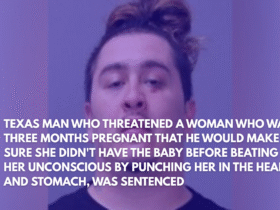A federal judge has stopped the Trump administration from ending union rights for a large number of government employees. This decision was made on Friday by US District Court Judge Paul Friedman in Washington, D.C.
In a major move, Judge Friedman issued a preliminary injunction against a key part of President Donald Trump’s executive order. This order would have allowed more than a dozen government agencies to stop collective bargaining with their workers’ unions, but the judge found it unlawful.
What Was Trump’s Executive Order About?
President Trump signed the executive order in late March. His plan was to change how the federal workforce operates, mainly by removing union rights from employees whose jobs involve national security work.
The order applied to workers in important agencies like the State Department, the Defense Department, the Justice Department, and the Department of Health and Human Services.
It also included agencies like the Centers for Disease Control and Prevention (CDC), the Federal Communications Commission (FCC), and Immigration and Customs Enforcement (ICE).
According to a White House fact sheet, the goal of the order was to build a more “responsive and accountable” civil service that would better protect national security. The fact sheet also claimed that federal unions had “declared war on President Trump’s agenda.”
How Did Unions React?
The National Treasury Employees Union (NTEU) immediately filed a lawsuit to block the executive order. They argued that removing union rights went against a law passed by Congress, which was meant to support and strengthen collective bargaining for federal workers.
The NTEU said that Trump’s order would strip union rights from about two-thirds of its members. They also filed a request for a preliminary injunction to stop the order from being enforced while the lawsuit moved forward.
Paras Shah, NTEU’s deputy general counsel, said during a court hearing that no president had ever tried to use the national security exemption so broadly. He pointed out that the executive order aimed to do two things: make it easier to fire federal workers and punish unions that had opposed the president’s policies.
What Did the Judge Say?
Judge Friedman appeared concerned about the president’s motives. He referred to the fact sheet and said Trump seemed willing to work with unions that supported him, but not with those that had filed complaints or grievances against him.
The judge said, “He’s willing to be kind to those that work with him. Those that have sued him, those that have filed grievances, those that have complained against him, he’s not going to bargain with. How else can you read what he’s done?”
What Was the Government’s Argument?
Justice Department lawyer Emily Hall disagreed with the judge. She said the executive order did not apply to all agencies where the NTEU represented workers. She also explained that collective bargaining can slow down policy changes that are important for national security.
Hall argued that the president needed the ability to quickly implement changes without waiting for union negotiations.
However, Judge Friedman challenged the idea that all the agencies covered by the order were mainly focused on national security. He gave examples like the National Institutes of Health (NIH), the Federal Emergency Management Agency (FEMA), and the Department of Agriculture, questioning whether national security was their primary job.











Leave a Reply